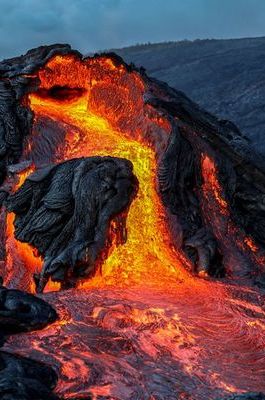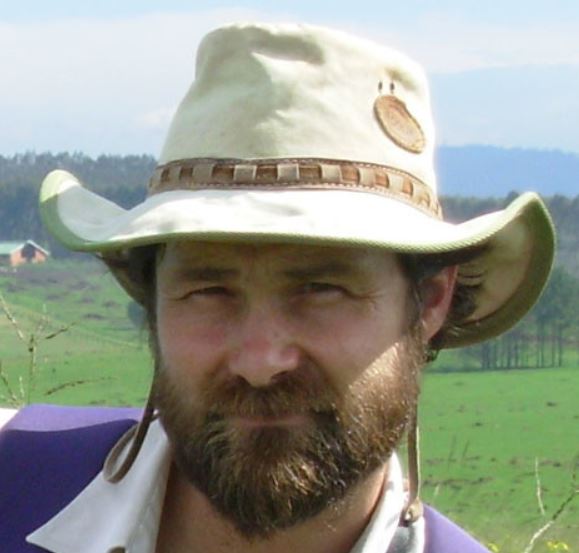
Category: Rocks and Weathering
Ambit: Cambridge A-Level Rocks and Weathering Syllabus
Hierarchy: Rocks and Weathering/Plate Tectonics
Plate Tectonics is arguably one of the most important scientific discoveries of all time. It ranks with the discovery of DNA, the Theory of Relativity and the Theory of Evolution.
Plate tectonics recycles the rocks, recycles our atmosphere, and keeps our planet dynamic and alive. Without plate tectonics the world as we know it would not exist - the landscapes, the ocean basins, the currents and the climate is all controlled by this exquisitely balanced system.
Let's go on an amazing journey - a journey to exotic islands, towering mountain ranges and the vast blue Pacific Ocean.

What makes the Rock and Sky Plate Tectonics Module Different?
Built by Earth Scientists
Plate tectonics is the lens through which earth scientists view their world. Tectonic collisions has led to the formation of mountain chains, with their share of faults, folds and a host of different rock types.
Studying modern examples provides insights into other eroded remnants of Earth's crust, along with insights into the formation of ore bodies and mineral deposits. Rock and Sky was founded by a geologist, so who better could you find to teach this module?
Real Life Examples
A cameras, a drone, a good pair of boots is all you need to go and find some great examples of the features that we teach here in our courses.
The effects of Plate Tectonics are to be seen everywhere if you know where to look.
Obviously we will bring wonderful examples such as the Alps and Himalayas into the class, but we will also talk about some less obvious but no less important examples of how plate tectonics affects your everyday life.
A Tale of Big Science
Alfred Wegener was the first scientist to propose the crazy notion that the continents had all once been joined together. His theory was shot down in flames, but Wegener was a clever man, and his mad ideas were eventually proven right.
The tale of how the puzzle was unravelled is a fascinating one, with big budgets, big egos and big theories competing to eventually arrive at at a consensus of how our world work.
So what will YOU teach the kids?
Plate Tectonics – the biggest thing to happen since Darwin published his “On the Origin of Species”. Although perhaps not quite as controversial, it changed the way we view our world.

Nanga Parbat, Himalayas. Still rising at 7 mm per year.
At the time the whole idea of continents moving around didn’t seem possible, but now we take it for granted. So much so that the theory has been relegated to a small section of the syllabus.
Which is a shame – perhaps a travesty – for without plate tectonics our planet would be a dull and lifeless place. In fact, there would be no land. Nor would there be any life. You would not be here reading this.
So how can a theory so important not be central to our study of geography and geomorphology?
Here at Rock and Sky we pay tribute to plate tectonics – it is the lens through which we view our world.
The Earth’s crust is like pizza – thin based, a little burned in places, red in others, white elsewhere, with splashes of green and red depending on where you are. Spicy if you want, tasty certainly, and full of things to explore. It is an adventure.
So now that you understand why plate tectonics is so important, you need to come on this adventure to the highest and the lowest places on Earth. You will discover new things, have fun, and ultimately wow your class.

Mt Bromo in the foreground, and Mt Semeru smoking in the distance. Eastern Java, Indonesia
Our crust is 8 km thick below the oceans and up to 75 km below the continents. Basalt, the most important rock on Earth in terms of volume, is being freshly minted at the mid oceanic ridges as we speak. Crustal collision, with folding and faulting, is ongoing with high temperatures and pressures leading to metamorphism. Partial melting of rock at depth forms diapers which rise through the crust to form batholiths. Some of the molten rock may erupt as volcanoes. Eruptions are happening right now on a continent near you.

The destruction of Martinique due to the eruption of Mt Pelee. 30 000 people died as a result
The carbon-silicate cycle keeps our planet habitable, the rock cycle takes old crust and makes new in some amazingly complex and beautiful ways, and in doing so keeps our planet viable, vital and renewed. It’s an exquisitely balanced system that demands our full attention.
Beneath your feet Earth's crust is being subducted
Trekking the high passes of the Tibetan plateau is an amazing experience. It is geology writ large, with massive peaks towering into the blue sky. Folding and faulting is everywhere, along with metamorphosed rocks in the form of granites and gneisses. Scrambling up Indonesian volcanoes is equally exciting, although perhaps not as gruelling, although the equatorial heat and humidity can be a challenge. For a geologist, this stuff is meat and drink, especially when you understand the mechanics of this global system and realise that beneath your feet the crust is being subducted along a massive, juddering front.

Mt Everest as the distant peak, thrust up due to plate tectonics
If this is the stuff that blows the geologists hair back, then surely geomorphologists and by extension you as a geography teacher also need to understand a little more about it. And we are here to help you in your quest.
We have taken a new approach in our course – going deeper and wider. Some history. Some adventure. Plenty of facts. Lots of lovely detail. Real world examples. Like our Indonesian volcanoes and Indian Himalayas. No funny squiggles to denote a folded mountain range, but a real cross section through the Alps and through the Himalayas. We are here to fire up your kids’ imagination.
Important Announcement
We have written a fantastic E-book on Plate Tectonics, which you may be interested in. It covers everything in the syllabus and much more besides. So grab yourself a copy by clicking on the link below.

"
The book is rich with the factual and historical background to the development of the theory of plate tectonics as well as providing a thorough grounding of the modern research and scientific insights that inform our understanding of this foundational theory. I am already thinking about how to incorporate this fresh perspective into my work.
John Roff - Educator and Nature Guide
About the Plate Tectonics Course
Note: We are currently building out this course. As it stands it will comprise the following
The course comprises 7 chapters:
- Why Plate Tectonics is arguably the most important part of the geography syllabus
- Earth's structure
- The concept of tectonic plates
- Different types of plate boundaries - divergent, constructive, convergent and conservative.
- Subduction and sea floor spreading
- Landforms formed at plate boundaries - fold mountains, volcanic island arcs, ocean ridges and ocean trenches
- A tale of grand adventure and big science - the development of the theory.
The course comprises 7 videos covering all of the above topics. They are of varying length depending on how much ground needs to be covered in each chapter.
The beauty of video is that you can stop, download, discuss and interact with the course content at your own pace.
Each course comes with PDF notes of the material covered for distribution to your learners.
Here is a video which we made on the theory.
While you wait for the course you can get up to speed with the subject with our fantastic Plate Tectonics e-book. It will give you amazing insights into what is a specialised field of study in its own right, and much more besides. So grab yourself a copy by clicking on the link below.
